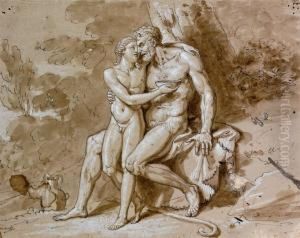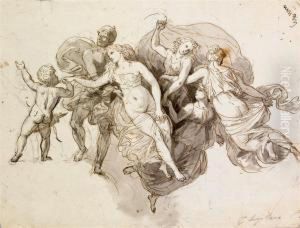Luigi Vacca Paintings
Luigi Vacca was an Italian painter, predominantly known for his landscape paintings and his role in the development of the Scuola di Posillipo. Born in Milan in 1778, Vacca’s early life is not extensively documented, but it is known that he developed a profound interest in art at a young age. His initial training and influences remain a subject of speculation among art historians, with limited records from the period providing concrete details.
Vacca’s work is often associated with the Scuola di Posillipo (School of Posillipo), which was a group of artists centered in Naples who focused on landscape painting and were inspired by the picturesque beauty of the Neapolitan surroundings. This school flourished in the early 19th century and was named after the Posillipo area, which is renowned for its scenic beauty. The Scuola di Posillipo was characterized by a departure from the classical and idealized landscape compositions of previous generations, moving towards a more realistic and immediate representation of nature.
Throughout his career, Luigi Vacca was known to have traveled extensively throughout Italy, capturing the diverse landscapes from northern regions to the southern coast. His paintings often depict rural scenes, coastal views, and cityscapes with a delicate handling of light and atmosphere, which was typical of the Posillipo School’s aesthetic. Vacca’s ability to render the luminosity of the Italian sky and the texture of the Mediterranean landscape won him acclaim among his contemporaries.
Vacca’s influence extended beyond his own work, as he was also active in the artistic community, mentoring younger artists and contributing to the diffusion of the Posillipo School’s stylistic approach. His legacy is preserved in the collections of various Italian museums and in the private collections of those who appreciate the early 19th-century Italian landscape tradition.
Luigi Vacca passed away in 1854. Although he may not be as widely recognized as some of his contemporaries, his contributions to Italian landscape painting and his role in the Scuola di Posillipo ensure that he remains a respected figure within the history of European art.

